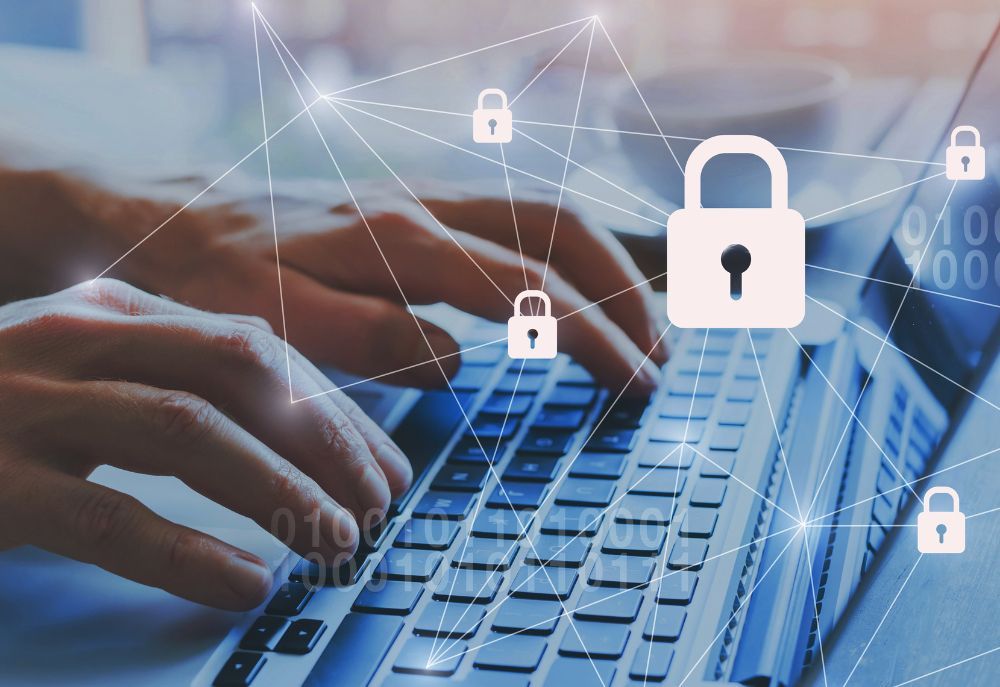Cloud computing solutions for businesses
In today’s rapidly evolving business landscape, the ability to adapt and continue operations under unforeseen circumstances is more critical than ever. Businesses of all sizes face a myriad of challenges that can disrupt operations, from natural disasters to cyber threats. This is where IT consulting plays a pivotal role. At Guardian IT, we understand the complexities involved in maintaining business continuity and are committed to helping organizations safeguard their operations against potential disruptions.
As companies become increasingly reliant on technology, the need for a robust business continuity plan that includes IT consulting is paramount. IT consulting provides strategic insights and technical expertise that are indispensable in developing and implementing effective continuity strategies. From risk assessment to disaster recovery solutions, IT consultants offer a wealth of knowledge that can be tailored to meet the unique needs of any business.
In the sections that follow, we will delve deeper into the critical components of business continuity planning and explore how expert IT consulting services can ensure your business is prepared for any challenge. Whether you are looking to enhance your existing plans or develop new strategies, our expertise can guide you in fortifying your business against future risks.
Understanding IT Consulting for Business Resilience
In the quest for business resilience, understanding the role of IT consulting becomes indispensable. As highlighted in the introduction, unforeseen challenges such as natural disasters and cyber threats necessitate a strategic approach to maintaining operations. This is where Guardian IT steps in, offering expert guidance to ensure your business remains robust in the face of adversity.
IT consulting is not just about immediate problem-solving; it involves a proactive strategy to fortify your business infrastructure. By conducting thorough risk assessments, IT consultants can identify potential vulnerabilities within your systems.
Moreover, with the increasing reliance on technology, having a well-defined disaster recovery plan is non-negotiable. IT consultants provide the technical expertise to design, implement, and test these plans, ensuring a swift recovery in the event of a disruption. By prioritizing these strategies, businesses can not only survive but thrive amidst challenges.
As you continue to explore ways to enhance your business resilience, consider how partnering with an IT consulting firm like Guardian IT can offer a competitive edge. With tailored solutions and strategic insights, our team is dedicated to safeguarding your operations and supporting your long-term success.
Key Benefits of IT Consulting in Crisis Management
In today’s dynamic business environment, the role of IT consulting in crisis management is crucial. Here are five key benefits that highlight how expert guidance can bolster your business continuity efforts:
1. Enhanced Risk Identification: IT consultants conduct comprehensive assessments to uncover vulnerabilities across your technology infrastructure. By proactively identifying potential threats, your business can implement effective mitigation strategies, reducing the likelihood of significant disruptions.
2. Tailored Continuity Planning: Every business is unique, and so are its continuity needs. IT consulting services provide customized solutions that align with your specific operational requirements. This ensures that your continuity plan is both relevant and effective, enhancing your overall resilience.
3. Streamlined Disaster Recovery: A well-defined disaster recovery plan is vital for swift operational recovery. IT consultants bring the technical expertise needed to design and test these plans, ensuring minimal downtime and a faster return to normal operations when crises occur.
4. Strategic Technology Integration: Incorporating the right technologies within your continuity plan can significantly enhance your crisis management capabilities. IT consultants guide you in selecting and integrating these technologies, ensuring they support your strategic goals and provide a competitive edge.
5. Continuous Improvement and Support: The landscape of risks is ever-evolving, requiring continuous adaptation of your strategies. IT consultants offer ongoing support and insights, helping your business stay ahead of emerging threats and ensuring your continuity plans remain robust over time.
By leveraging the expertise of IT consulting, businesses can effectively navigate crises and secure their operations.
Integrating IT Consulting into Continuity Strategies
Integrating IT consulting into continuity strategies is a critical step for businesses aiming to bolster their resilience against disruptions. As explored in our previous sections, the dynamic nature of today’s business environment demands a proactive approach to risk management and operational continuity. With Guardian IT, you can seamlessly incorporate IT consulting into your continuity plans, ensuring your business is well-equipped to handle unforeseen challenges.
One of the primary advantages of integrating IT consulting is the ability to develop a robust business continuity plan that is tailored specifically to your operational needs. This involves not only identifying potential vulnerabilities but also crafting customized solutions that enhance your resilience. By leveraging the expertise of IT consultants, businesses can ensure their continuity plans are both comprehensive and adaptable to evolving threats.
Moreover, IT consulting plays a pivotal role in optimizing disaster recovery strategies. Consultants provide the technical expertise necessary for designing, implementing, and testing recovery plans, thereby minimizing downtime and facilitating a swift return to normal operations. This proactive approach is essential for maintaining business continuity in the face of crises.
Another key aspect of integrating IT consulting is the strategic technology integration within your continuity framework. Consultants help identify and implement the right technologies that align with your strategic goals, providing a competitive edge and enhancing your crisis management capabilities. This ensures that your business remains agile and responsive to any disruptions.
Finally, continuous improvement and support are integral components of effective continuity strategies. The landscape of risks is continually changing, and IT consultants offer ongoing insights and support to ensure your plans remain robust over time. By partnering with an IT consulting firm like Guardian IT, businesses can stay ahead of emerging threats and maintain their operational integrity.
Incorporating IT consulting into your continuity strategies is not just about safeguarding your operations; it’s about empowering your business to thrive even amidst challenges.
Evaluating IT Consultants for Effective Business Continuity
Choosing the right IT consultant is a crucial step in developing an effective business continuity plan. With the insights and expertise of a skilled consultant, businesses can significantly enhance their resilience against unexpected disruptions. Here are some key considerations when evaluating IT consultants for your continuity needs:
1. Relevant Experience: Ensure that the IT consultant has extensive experience in your specific industry. An understanding of the unique challenges and regulatory requirements you face is essential for crafting a tailored continuity strategy. Look for consultants who have successfully managed similar projects in the past.
2. Comprehensive Skill Set: The IT consultant should offer a wide range of skills, including risk assessment, disaster recovery planning, and strategic technology integration. This comprehensive skill set ensures that they can address all aspects of your business continuity needs effectively.
3. Proven Track Record: Check for a proven track record of success. Testimonials, case studies, and references from previous clients can provide valuable insights into the consultant’s ability to deliver results. A strong track record indicates reliability and competence in managing complex continuity challenges.
4. Customization Capabilities: One size does not fit all in business continuity planning. The consultant should be capable of designing customized solutions that align with your specific operational needs and strategic goals. This level of personalization is critical for ensuring the effectiveness of your continuity plan.
5. Ongoing Support: The business environment is constantly evolving, and so are the risks. Choose a consultant who offers ongoing support and continuous improvement of your continuity strategies. This ensures that your plans remain robust and relevant over time, adapting to new threats as they arise.
By carefully evaluating IT consultants against these criteria, you can select a partner who will empower your business to maintain operational integrity and thrive in the face of adversity. To explore how Guardian IT can assist in fortifying your business continuity efforts, visit our services page.
Top IT Consulting In Business Continuity Planning
In the ever-changing landscape of business operations, ensuring business continuity is no longer a luxury but a necessity. As we’ve explored, integrating IT consulting into your continuity strategies provides a comprehensive approach to safeguarding your operations against unforeseen disruptions. From enhanced risk identification to streamlined disaster recovery, the benefits of leveraging IT consulting are manifold and vital for maintaining resilience.
Choosing the right IT consultant is pivotal in crafting a tailored business continuity plan that addresses your unique needs. By focusing on relevant experience, a comprehensive skill set, and the ability to provide ongoing support, businesses can partner with a consultant that empowers them to thrive amidst challenges. Guardian IT stands ready to assist in fortifying your operations with expert guidance and customized solutions.
As you move forward, consider how expert IT consulting can play a pivotal role in not only protecting your business but also in driving strategic growth. By proactively engaging with an IT consulting firm, you can ensure your business remains agile, competitive, and prepared for whatever the future holds. Explore how these strategies can be implemented within your organization and take the next step towards securing your operational resilience.
Frequently Asked Questions
What is the role of IT consulting in business continuity planning?
IT consulting plays a pivotal role in business continuity planning by providing strategic insights and technical expertise essential for developing robust continuity strategies. IT consultants conduct thorough risk assessments to identify potential vulnerabilities in your systems, helping to craft a comprehensive continuity plan tailored to your specific business needs. This proactive approach ensures that your organization is well-prepared to maintain operations during unforeseen disruptions, such as natural disasters and cyber threats. By incorporating IT consulting, businesses can enhance their resilience and safeguard their operations effectively.
How does IT consulting enhance business continuity strategies?
IT consulting enhances business continuity strategies by offering tailored solutions that align with unique operational requirements. Consultants provide expertise in disaster recovery planning, ensuring swift recovery and minimal downtime during crises. They guide businesses in integrating strategic technologies that bolster crisis management capabilities, giving companies a competitive edge. Additionally, IT consultants offer continuous support, helping businesses adapt their continuity strategies to emerging threats. This comprehensive approach ensures that continuity plans remain robust and relevant, enabling businesses to thrive amidst challenges.
Why do businesses need IT consulting for effective continuity planning?
Businesses need IT consulting for effective continuity planning because it provides the specialized knowledge required to address complex challenges. IT consultants offer enhanced risk identification and develop customized continuity plans that mitigate potential disruptions. Their expertise in technology integration and disaster recovery ensures that businesses can recover swiftly from crises. Moreover, the ongoing support from IT consultants helps organizations adapt to changing risks, maintaining robust and effective continuity strategies over time. This comprehensive approach is essential for sustaining operations and achieving long-term success in a dynamic business environment.
When should a business engage IT consultants for continuity planning?
A business should engage IT consultants for continuity planning as early as possible, ideally during the initial stages of developing a continuity strategy. Early engagement allows consultants to conduct comprehensive risk assessments and design customized solutions that align with the business’s strategic goals. Additionally, involving IT consultants early ensures that disaster recovery plans are thoroughly tested and optimized for swift crisis response. Continuous collaboration with IT consultants also enables businesses to adapt to evolving threats, ensuring their continuity strategies remain effective and robust over time.









